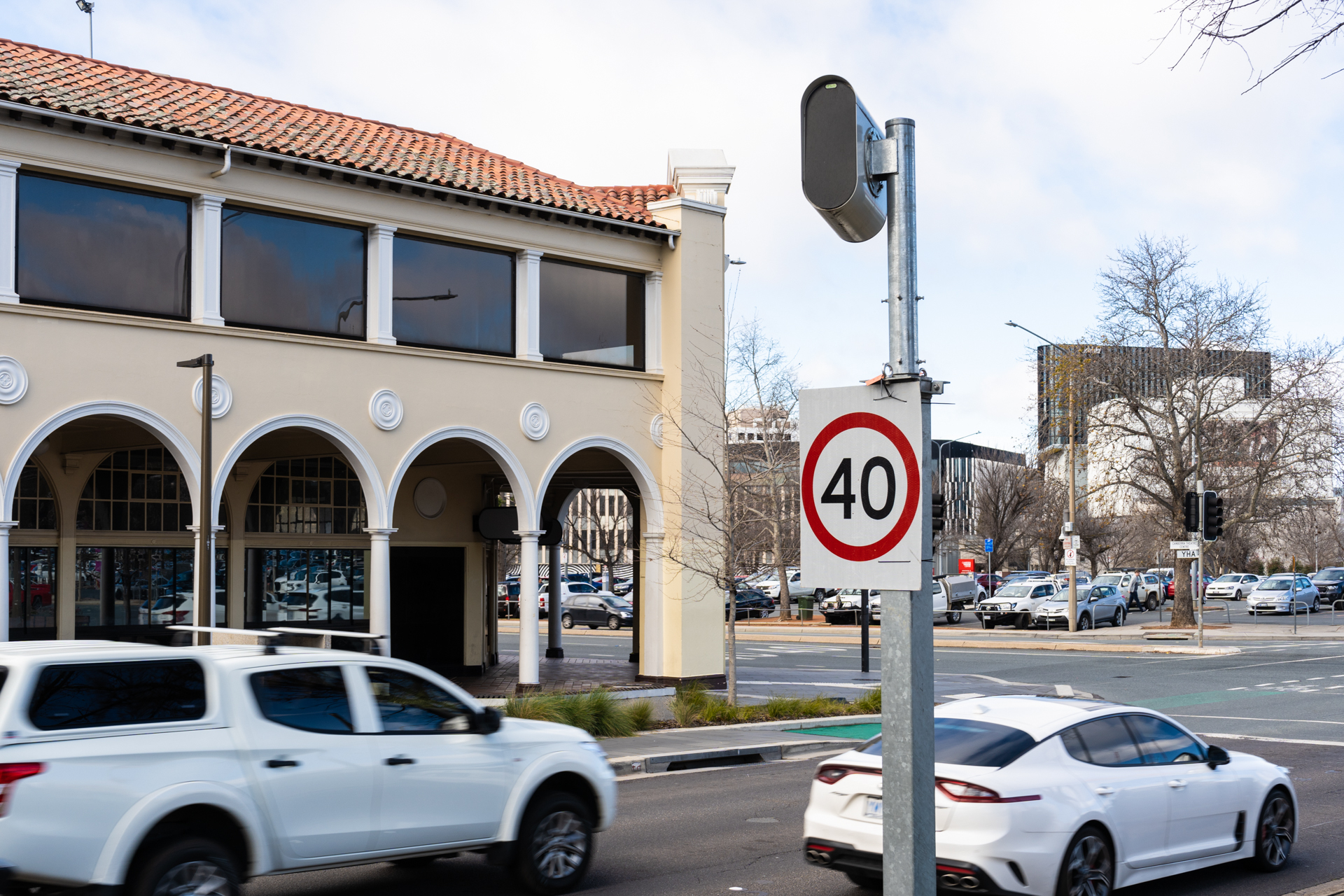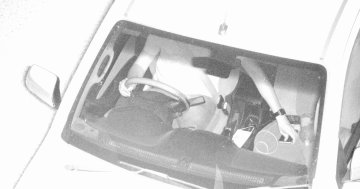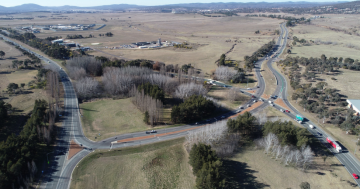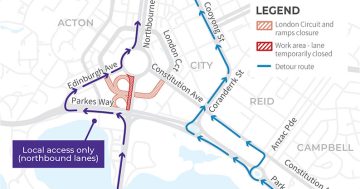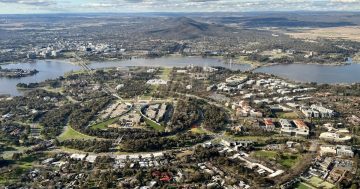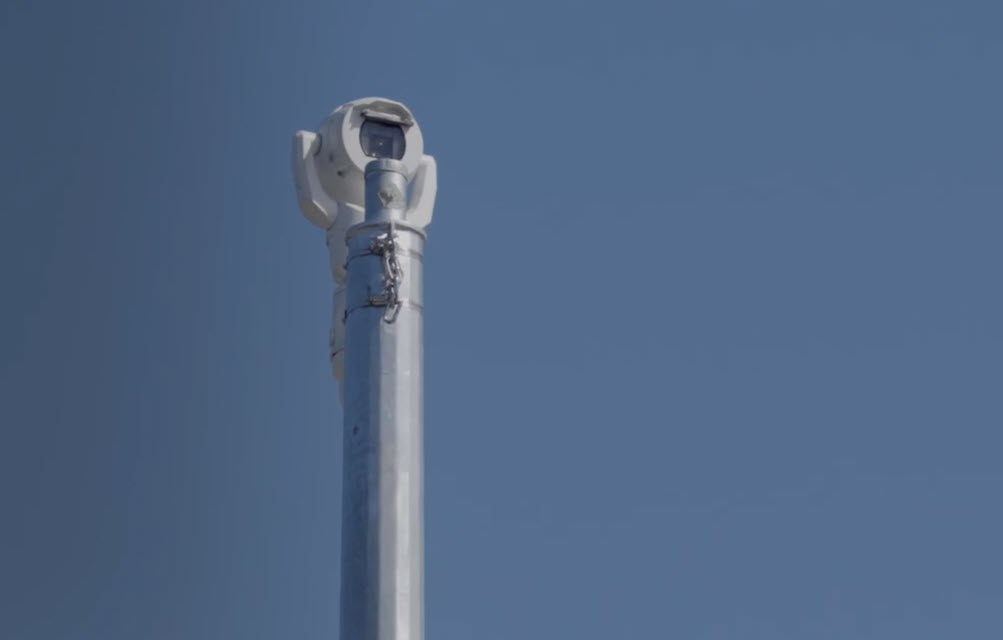
There are now 119 of these CCTV cameras across the ACT’s road network, so what are they doing? Photo: Screenshot, ACT Government.
By this point in the 21st century, we’re used to cameras. They’re in stores. They’re in lifts. They’re in buses. They’re by the roadside with ‘speed camera’ warning signs spread out for hundreds of metres before them, but wait – hang on – what are all these other cameras?
The eagle-eyed will have spotted an increasing number of white cameras overlooking roadways and intersections across Canberra. But what are they looking at? Where’s the footage going? And would you be able to ‘pretty-please’ access this footage in the case of a prang?
The ACT Government rolled out the first 25 traffic cameras in 2021, all high-definition and with tilt, pan and zoom functions.
Many of these were installed on gantries along the Tuggeranong Parkway as part of a plan to turn it into a ‘smart road’ with live traffic monitoring and variable speed limit signs – just like the major motorways in Sydney.
There are now 119 traffic cameras across the road network, with the most recent added to 23 locations, including five along Parkes Way and four along Caswell Drive/Tuggeranong Parkway.
Other key locations include:
- Northbourne Avenue / London Circuit
- Anzac Parade / Constitution Avenue
- Kings Avenue / State Circle
- Northbourne Avenue / Alinga Street
- Limestone Avenue / Majura Avenue / Wakefield Avenue, Ainslie
- Monaro Highway / Morshead Drive / Pialligo Avenue, Campbell
- Flemington Drive / Nullarbor Avenue, Harrison
- Horse Park Drive and the Federal Highway on-ramp, Majura
- Fairbairn Avenue and Majura Road, Pialligo
- Ashley Drive and Clift Crescent, Richardson
- Cotter Road and Streeton Drive, Weston
- John Gorton Drive and Steve Irwin Avenue, Wright
- Parkes Way near the Glenloch Interchange
- Parkes Way near Black Mountain Peninsula
- Gungahlin Drive approaching Belconnen Way
- Caswell Drive north of the Glenloch Interchange
- Tuggeranong Parkway at the Glenloch Interchange
- Tuggeranong Parkway near Forrest Drive.
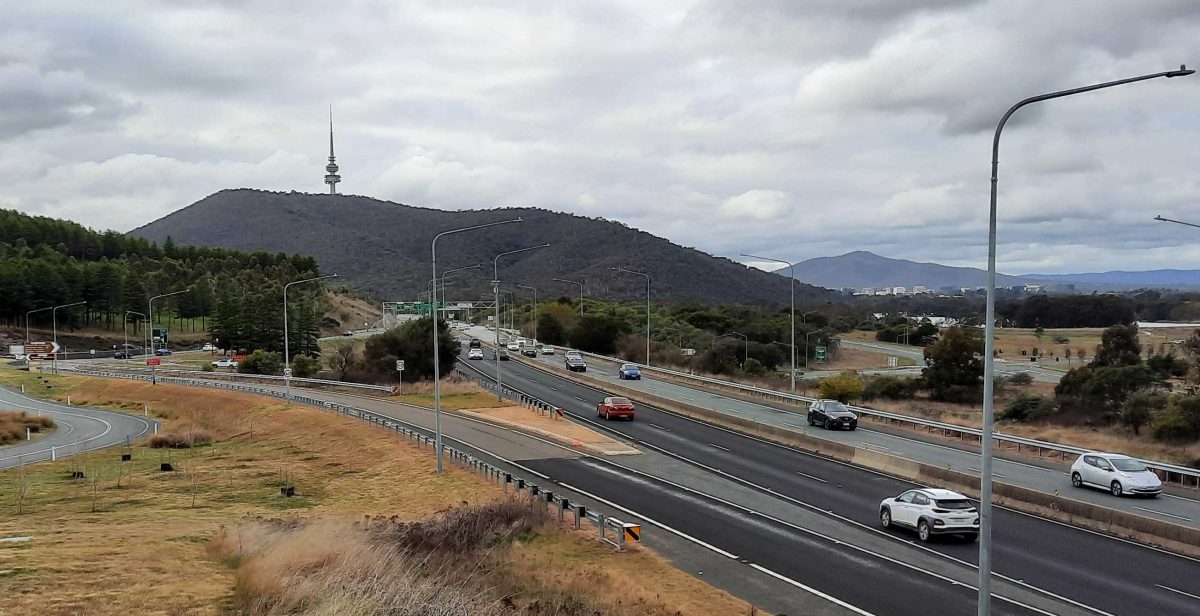
The ACT Government has plans to turn the Tuggeranong Parkway into a ‘smart road’. Photo: Ian Bushnell.
This total brings it in line with a report from 2013, prepared for the ACT Government by infrastructure consulting firm AECOM.
This found the ACT’s then traffic management systems “inadequate” and suggested a staged rollout of a sophisticated integrated traffic management system of 119 CCTV cameras and variable speed signs and monitoring stations.
This would be jointly funded by the territory and federal governments through a $12 million road safety funding program. The most recent rollout totalled $1.2 million over two years.
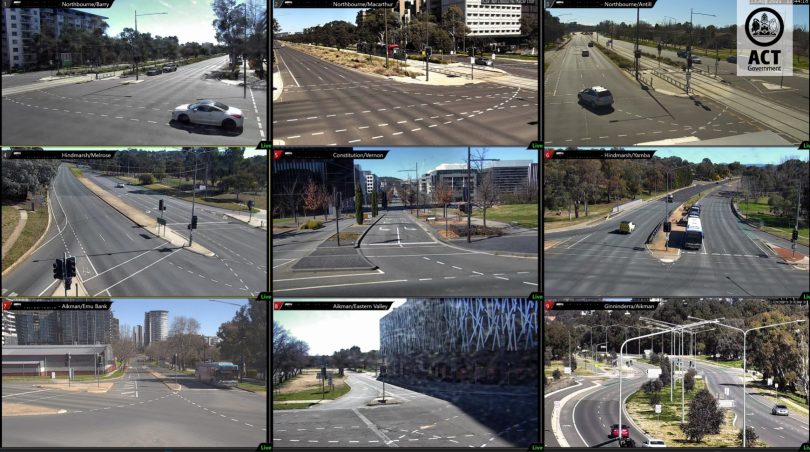
Traffic cameras are typically placed at intersections with a history of accidents. Photo: ACT Government.
In a submission to the government’s ‘Inquiry into Dangerous Driving’, ACT Policing asked to use these cameras for number-plate recognition, something they have reportedly employed through the point-to-point speed cameras on Hindmarsh and Athlon Drive.
Police have also reportedly used data from the MyWay electronic bus ticketing system in the past, and footage from a camera inside an ACTION bus was used in 2013 to work out who was at fault when two cars collided and an 84-year-old man was killed.
But to do this, they have to demonstrate it’s “reasonably necessary for the enforcement of the criminal law”.
A government spokesperson confirmed the 119 traffic cameras aren’t used in this way.
“An expanded network of transport monitoring technology has been introduced to both help motorists make real-time decisions about what route to take and improve response times when incidents happen across the network,” the spokesperson said.
In other words, the cameras provide a live feed of what’s happening on the road.
This is watched every weekday from 7 am to 7 pm from the Traffic Management Centre (TMC) in Fyshwick and “occasionally outside of these hours when significant events are being held”.
From here, the team is able to change traffic lights from red to green or vice versa to improve traffic flow, alert bus drivers of incidents across the network and inform motorists of potential delays via social media, radio messages or the variable message signs by the side of the road.
There are currently nine variable message boards across Canberra. They were recently added to the Tuggeranong Parkway, Majura Parkway and Belconnen Way.
The spokesperson affirmed the “cameras utilise live monitoring only and are not recorded”.
So far, their only other use has been to identify safety hazards, such as potholes.
For example, in 2022, the team identified potholes on the Tuggeranong Parkway after they spotted unusual activity on the screens when multiple vehicles pulled over in the same spot.
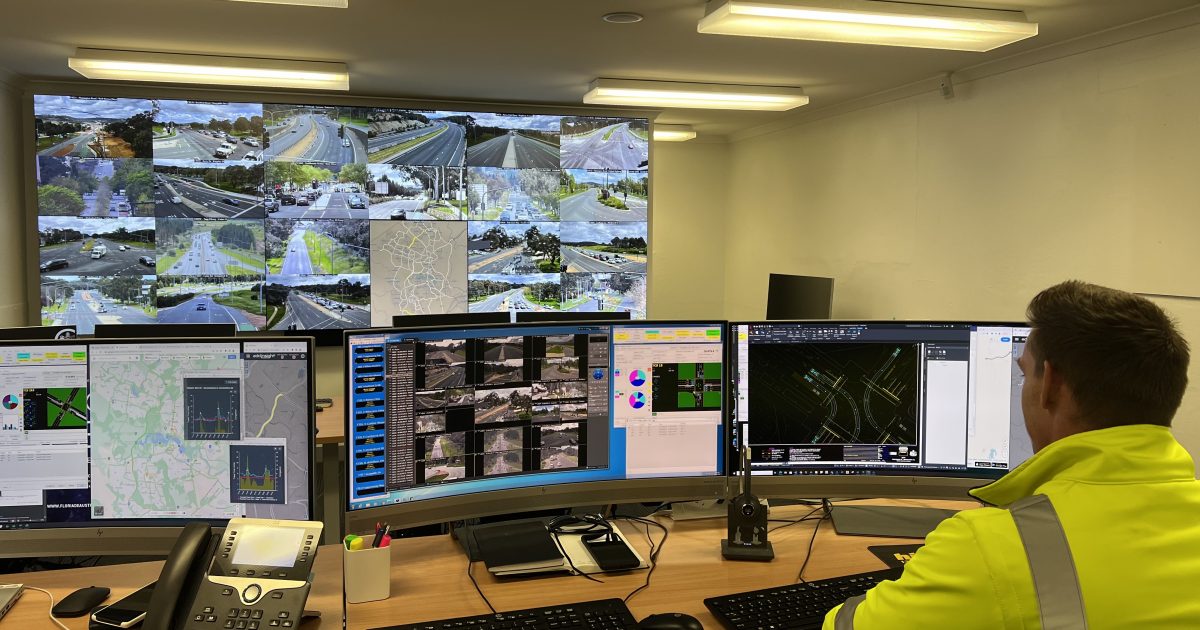
Inside the Traffic Management Centre (TMC). Photo: Lottie Twyford.
TMC also taps into footage provided by the CCTV cameras on Transport Canberra buses, information from ACT Policing and ‘Bluetooth sniffers’ to monitor traffic.
The ‘sniffers’ don’t provide any visual feed but pick up the MAC addresses of Bluetooth-enabled devices, such as smartphones, in passing cars. Another sniffer further down the road picks up this same information and times how long it took the car to reach it.
This effectively provides the operations team real-time information on commute times and congestion.
There are currently 234 Bluetooth sniffers on Canberra’s roads. The data collected is encrypted and deleted as soon as it has done its job.
As to other uses of technology like this, the ACT Government would have to prove the information is “necessary” to prevent a serious threat to the life, health or safety of any individual, or face serious legal consequences under the Commonwealth Privacy Act 1988.
Original Article published by James Coleman on Riotact.




